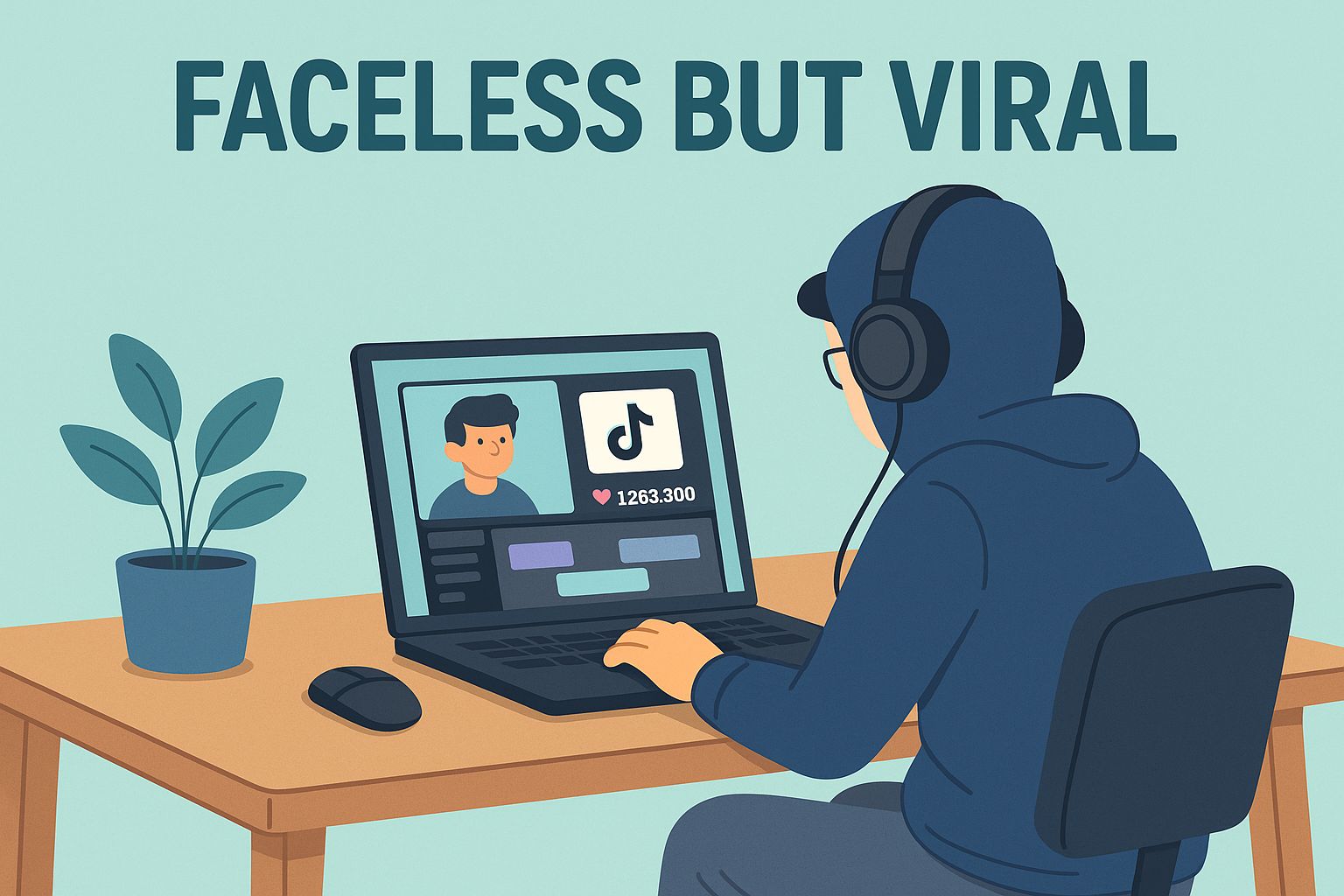Do You Have to Show Your Face to Get Views on TikTok?
This question hits home for a lot of people starting out on TikTok.
You open the app. Scroll for five minutes. And nearly every viral video seems to feature someone talking directly to the camera, full face in frame. It’s easy to assume that showing your face is the only way to grow.
But it’s not.
I’ve talked to creators pulling in millions of views without ever appearing on camera. And others who found moderate boosts when they started revealing just a little more of themselves—whether it was a hand, a voice, or a quick cameo.
This article breaks it down clearly:
-
What the TikTok algorithm really favors
-
The pros and cons of showing your face
-
What successful faceless creators are doing right
-
How to improve your content without ever going on camera
-
Tools like HeyGen that help with faceless creation
If you’re camera-shy, private, or just prefer letting your work speak for itself, you’ll want to read this.
Does Showing Your Face Help? Yes — But It’s Not Required

Some creators do see better performance when they start showing their face. A few Reddit users mentioned that even just revealing part of their face boosted views and profile visits.
That’s no surprise.
Face-to-camera content feels personal. It mimics FaceTime. Viewers stop scrolling when they feel someone is talking to them.
But here’s the truth: it’s not the only way to grow.
One creator said they never showed their face and still hit 60 million views in a year with over 120k followers. Others noted that their AI-cloned or voiceover-only content actually outperformed the ones where they appeared on camera.
So while showing your face can help, it’s not some golden ticket.
Why Faceless Content Is Harder — But Totally Possible
Creating faceless content that works takes more effort. You lose the instant connection that comes from eye contact or facial expression.
But if your idea is strong and your editing is sharp, you can still win.
Faceless creators thrive when they:
-
Hook viewers in the first 1–2 seconds
-
Use a clear and punchy narration
-
Include fast cuts or motion to keep visual energy high
-
Stick to a niche (like nail art, stories, tutorials, or news commentary)
You have to rely on storytelling, sound, structure, and style.
One user put it best: “You don’t NEED to do any one thing. Just make something entertaining, informative, or both.”
Common Mistakes That Hurt Your Views (Face or No Face)
A few Reddit replies pointed out something most new creators miss: your face isn’t the issue—your content clarity is.
One user said they couldn’t tell what was happening in the first five seconds of the OP’s video. That alone is enough to lose viewers.
The biggest content killers:
-
Confusing intros
-
Slow pacing
-
Low-quality audio
-
Poor lighting or cluttered visuals
-
No clear topic or value for the viewer
TikTok’s algorithm tracks how long people watch your video. If they swipe away too soon, the platform assumes it’s not worth pushing.
So before you worry about your appearance, ask:
-
Does the first 3 seconds grab attention?
-
Is the message clear without needing context?
-
Would I keep watching this if I didn’t know me?
If not, fix those first.
Faceless Doesn’t Mean Personality-Free
One mistake faceless creators make is hiding everything, not just their face.
That kills personality.
You can be anonymous and still be expressive.
-
Use your voice to bring energy and emotion
-
Write on-screen text that sounds like you
-
Add music or sound effects to set the mood
-
Show your hands, art, work process, pets—something human
TikTok isn’t about perfection. It’s about connection.
And connection doesn’t need a face.
Tools That Help You Stay Off-Camera (and Still Grow)
If you’re serious about staying faceless but still want pro-level content, start experimenting with AI tools.
One name that came up more than once: HeyGen.
It lets you create presenter-style videos without showing your face. You can upload your script, pick an avatar, and generate a polished video where a realistic AI person speaks on your behalf.
For niche creators—especially those doing storytelling, tutorials, or commentary—this can be a game-changer.
Other faceless-friendly tools worth exploring:
-
CapCut – for quick mobile editing with templates
-
ElevenLabs – for realistic AI voiceovers
-
Canva – to build branded visuals and static video content
-
The Social Proxy – to manage multiple accounts if you’re running faceless content across niches
These tools help remove the pressure of being “on” while still letting you create engaging, scroll-stopping content.
Final Thoughts: Stop Stressing About Your Face
Showing your face might give you a boost, especially in lifestyle or personal content—but it’s not required.
You don’t have to reveal anything you’re not comfortable with.
Instead, focus on:
-
Sharper edits
-
Better hooks
-
Higher quality sound and pacing
-
Original ideas or smart angles on popular trends
Creators grow every day by leading with skill, not selfies.
And with tools like HeyGen, CapCut, and proxy services like The Social Proxy, you’ve got options—lots of them.
